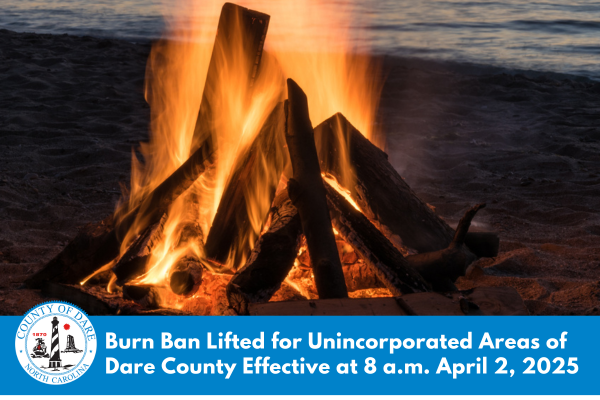Newly established ORV corridor allows for continued Cape Point access
Cape Hatteras National Seashore officials established an off-road vehicle corridor near Cape Point at 7 a.m. this morning to allow drivers to bypass a handful of American oystercatchers that are engaged in nesting behavior.
This is the first time that the seashore has used the new buffer regulations for bird-nesting activity. The regulations were enacted last summer in mid-June as a part of changes in the ORV plan that were required by legislation passed by Congress in December 2014.
Under the old buffer rules, the area would have been closed to both ORVs and pedestrians when the birds began exhibiting their “courting” behavior — effectively shutting down access to Cape Point.
The new rules allow the park to establish a corridor to allow ORVs to pass by the birds during breeding and nesting, provided that the corridor is a minimum of 25 meters away from the specific nesting area.
According to Hatteras Island District Ranger Joe Darling, the corridor is .26 miles long and is open to ORVs only. It is closed to pedestrians, due to the 150 meter restriction for on-foot visitors.
The corridor is essentially a straight-shot along the beach, in between the tide line and the enclosure signs, and several visitors to The Point on early Tuesday afternoon didn’t realize that a change had been made.
“We saw the signs and thought something might be going on,” said one visitor from North Carolina, “but we just drove to the Point, like usual.”
Another visitor who said that he goes to the Point “every chance I get” did notice the corridor – or at least the increased access to his favorite fishing destination.
“We usually have to walk this time of year, or it’s closed,” he said in between casting. “This is the first time we’ve seen it open [during this time in the season.]
“We come here all the time, and I’m never going to stop coming — but this makes it a little easier,” he added.
Because the closure was so quickly established — and because this is the season when nesting activity effectively cuts off Point access, Darling touched base with all the tackle shops from Avon through Hatteras on Tuesday morning to make sure people knew that the Point was open.
“All of the responses have been positive,” he said. “This is the time of year when the Point would have been closed, and it’s nice to let people know that they can still access it. The people I talked to are very positive about it, and they’re relieved.”
“It’s a relief to us as well,” added Michelle Havens, the seashore’s chief of resource management. “We know how special this beach is, and we want people to be able to come [to the Point.]”
The closure could give OVRs up to 45 more days of access to the Point, based on oystercatcher nesting and breeding activity. It takes 30-45 days from initial nesting to hatching, and once the chicks have hatched, the closure will be extended to 150 meters and the corridor will close.
Pedestrians are still required to stay 150 meters away from the nesting activity, but Darling said that visitors who were accessing the Point by foot were getting creative about the fact they aren’t allowed to use the corridor. He said he talked to a couple of people who were hiking to the Point and were stopped at the corridor’s entrance. Undeterred, they hitched a ride in a vehicle for the 1/4 mile and then simply walked the rest of the way.
The bad news is that unexpected factors could affect the corridor. Nests that are within 25 meters, which is not likely, or tides, winds and weather — which are much more likely — could cause a closure at any undetermined time.
“We’d love to be able to say that ‘this is the date that the corridor will end – get your fishing in now,’” said Darling. “But there could be a big storm that erodes the beach and results in a safety closure. There’s no way to know.”
In the meantime, however, the corridor is wide open – and because of its hurried 7 a.m. establishment, visitors had uninterrupted access to The Point all week.
In recent years, Cape Point has been closed to vehicles — and sometimes pedestrians — in early April. Last year, access to the Point was closed on April 7.
The new buffer rules are intended to allow more public access to the seashore’s beaches during the bird and turtle nesting season, while still protecting the wildlife.
Randy Swilling, the seashore’s natural resources program manager, said park rangers will be in the area, explaining the buffer rules to visitors and sharing with them how the park works to protect wildlife. The rangers will occasionally bring spotting scopes, so the visitors can get a better look at the birds.
“We want to have a presence, to get the word out,” Swilling said.
Visitors to the Point while the corridor is operational should note the following before heading to the beach:
While an unexpected end of the corridor is not outside the realm of possibility, long-time visitors, business owners, locals, and NPS staff are nevertheless glad that, for now, access to The Point continues through April.









[…] locale to previous years, and a buffer for the breeding/nesting activity has been established. When the buffers were modified in 2015, the new rules included an ability to place a driving corridor in front of the nesting areas, so […]